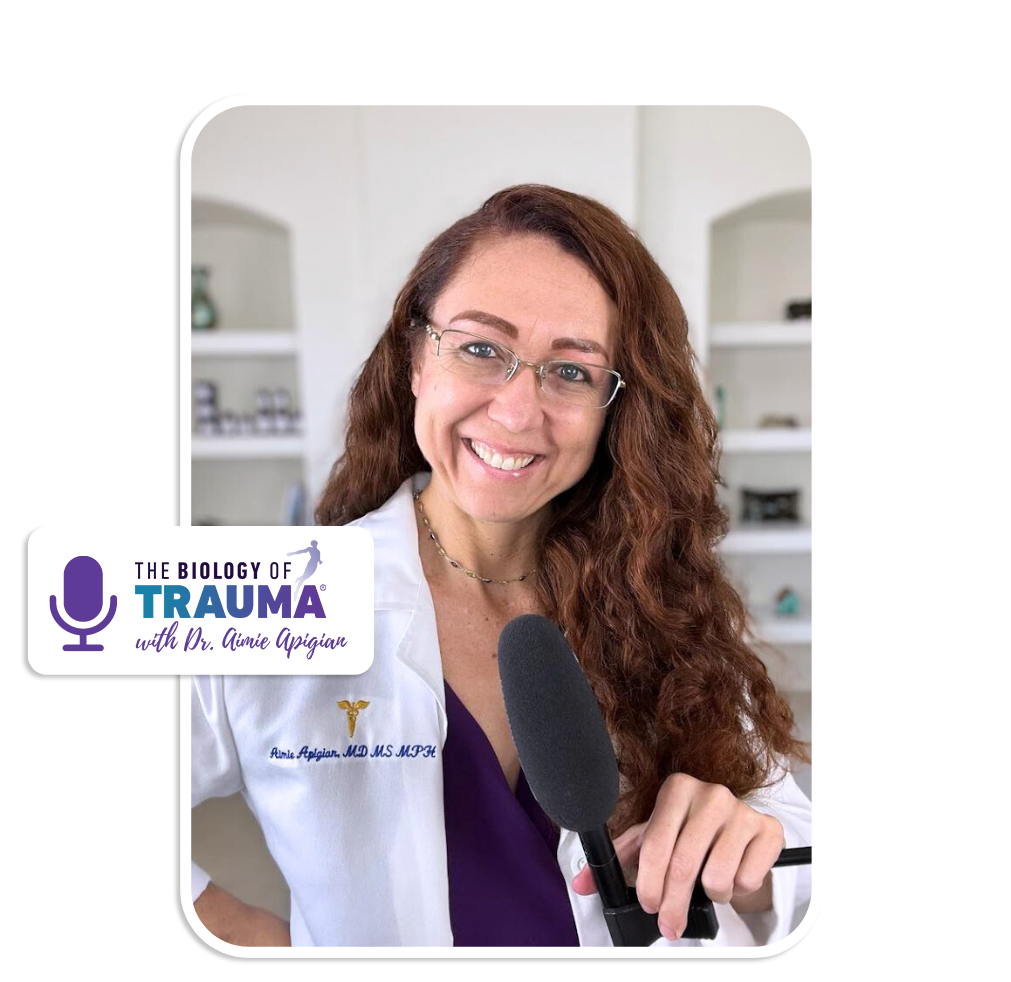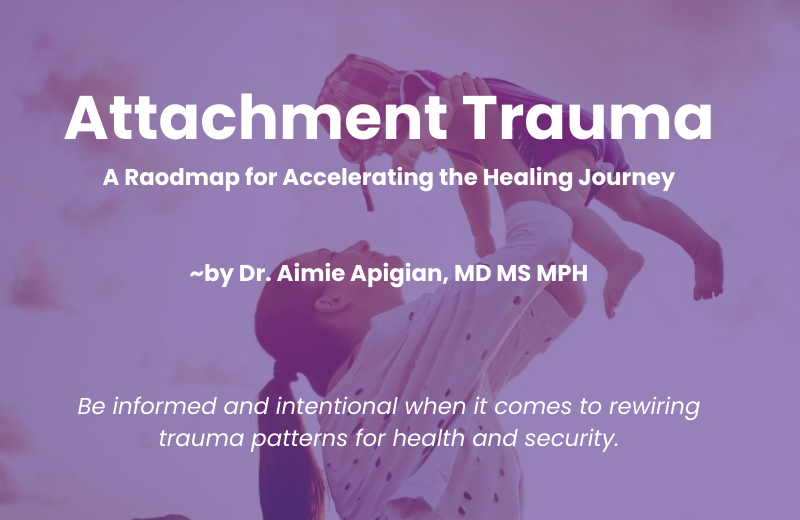
Biology of Trauma® Podcast
With Dr. Aimie Apigian MD, MS, MPH
Episode 48:How To Heal Bracing And Hypervigilance


Show Notes
In this episode featuring Cat Dillon, we discuss her experiences with bracing and hypervigilance as a result of childhood trauma. Cat Dillon’s personal journey of healing from the chronic bracing patterns and tension that began in her childhood and culminated in a panic attack while driving across a bridge was a turning point that led her to explore and understand her body’s needs better, ultimately guiding her towards a path of trauma healing.
Cat Dillon’s story is a narrative that explains the concept of bracing patterns, how they develop, and their impact on the body. This episode also touches on the importance of recognizing these patterns and using somatic practices to address them. The insights provided in this episode are meant to resonate with listeners who may have similar experiences of trauma and stress, providing them with a sense of understanding and potential strategies for healing.
Key Takeaways:
Here’s what you’ll learn about in this episode:
- The importance of recognizing and healing bracing and hypervigilance that often begins in childhood and can go unnoticed as we compare our experiences to others and minimize our own.
- The role of chronic busyness and multitasking as a means to avoid confronting internal trauma, leading to chronic bracing patterns and tension in the body.
- The significance of somatic work in trauma healing, especially when traditional methods like breathwork may not be effective.
- Understanding the difference between stress and trauma: stress is a temporary activation that the body can recover from, while trauma overwhelms the nervous system and can lead to long-term biological changes.
- The concept of “too much for too long or too little too late” in relation to how the body responds to overwhelming stress or trauma by shutting down to protect itself.
- The realization that trauma is not necessarily about the event itself but the body’s experience and response to it, which can be exacerbated by biochemical compromises or early life experiences.
- The acknowledgment of bracing patterns as a physical manifestation of the body’s instinct to guard against threat or discomfort, often rooted in childhood experiences.
- The journey from recognizing and addressing bracing patterns to cultivating bodily awareness and safety, moving from a state of rigidity to fluidity through somatic practices.
- The empowerment that comes from understanding one’s own bracing patterns and using tailored approaches to release them, fostering greater ease, movement, and a deeper connection with oneself.
Timestamps for this Episode:
- Cat’s Introduction (Part I Otter: :31 to :55) – Cat Dillon introduces herself as a registered holistic nutritionist and Functional Diagnostic practitioner, explaining her work with women dealing with chronic stress, weight, and food-related issues.
- The Buildup (Part I Otter: 7:50 to 8:11) – Cat discusses her background in high-stress environments, like working in kitchens, and how this contributed to her constant state of hyper-vigilance.
- The Breaking Point (Part I Otter: 6:16 to 7:26) – Cat shares the moment of her breaking point, which was a panic attack while driving across a bridge, leading her to realize the need to address her nervous system issues.
- Post-Breaking Point Realizations (Part I Otter: 11:07 to 15:38) – After her panic attack, Cat describes her journey towards understanding her body better, including her introduction to Dr. Aimie’s work and the realization that trauma can be more than just major events.
- Stress vs. Trauma (Part I Otter: 1:16 To 4:20) – Cat differentiates between stress and trauma, explaining how trauma can occur when stress overwhelms the body’s ability to cope, leading to a protective shutdown.
More about our guest:
Cat Dillon is a trauma-informed, registered holistic nutritionist and transformational life coach helping women in mid life address the root causes of their weight, gut, sleep, fatigue and mood issues so they can finally feel more connected, fully alive and balanced inside and out of their bodies.
She provides individualized and in depth nutritional counseling, not only through listening to her client’s story, but by using personalized assessments and lab analysis combining various modalities such as: building self-awareness, innate wisdom, intuitive and mindful eating, culinary nutrition, growing a personal somatic practice; lab testing (comprehensive gut, immune and hormone testing), micronutrient and neurotransmitter testing).
Her programs are designed for those who want to find true and lasting solutions and live a longer, better quality life now & prevent health issues down the road as they age.
Connect with me on social media
Products I recommend from this episode
Magnesium Calm – If you want better sleep and to ease brain inflammation then taking this supplement will help you
Comment Etiquette:
I want to hear from you! I would love to hear your thoughts on this episode and let’s make them constructive! A few requests: Please refrain from including URLs and using yours or someone else’s business name to steer clear of spam. Please do use your personal name or initials.
Let’s have a constructive, positive and productive discussion!
Drop your thoughts below about the episode! I want to hear from you.
Connect with me on social media
Foundational Journey
You. Calm. Alive.
Be safely guided step-by-step through the essential process for addressing stored trauma in your body.
Disclaimer:
By listening to this podcast, you agree not to use this podcast as medical advice to treat any medical condition in either yourself or others. Consult your own physician for any medical issues that you may be having. This entire disclaimer also applies to any guests or contributors to the podcast. Under no circumstances shall Trauma Healing Accelerated, any guests or contributors to The Biology of Trauma® podcast, or any employees, associates, or affiliates of Trauma Healing Accelerated be responsible for damages arising from the use of the podcast.



